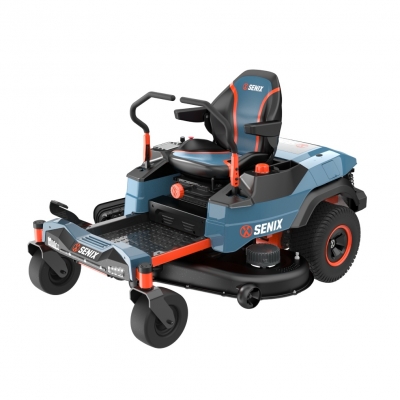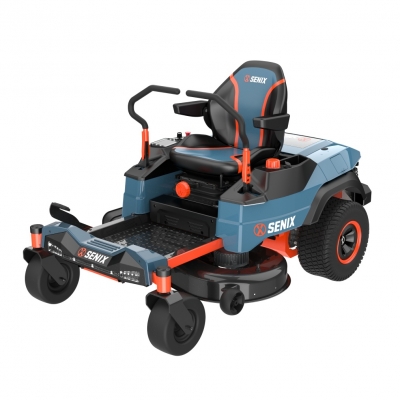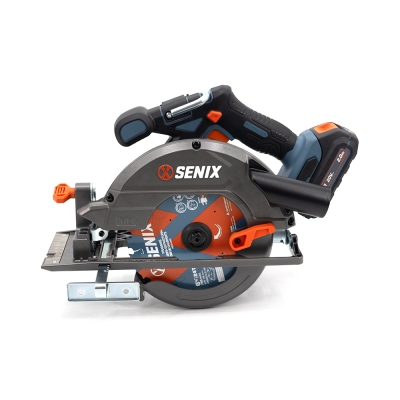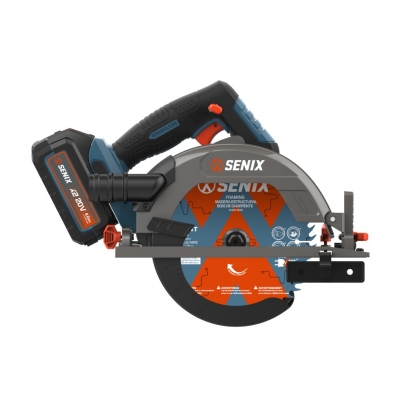How to Use a Circular Saw Like a Pro: Step-by-Step Guide
If you've just bought a circular saw or are thinking about upgrading, you're about to unlock one of the most versatile power tools in any workshop. As someone who has spent years helping DIYers and pros at Senix, I can confidently say that learning to use a circular saw correctly is a skill that pays off for life. Whether you're trimming lumber for a deck, cutting plywood for shelving, or tackling weekend projects, this tool can turn what used to be slow, hand-saw labor into quick, accurate, and satisfying work.
But power tools can feel intimidating at first, especially if you've never handled one before. Don't worry — I'm going to walk you through everything you need to know, from blades to maintenance, and share some of my favorite tips that will help you get pro-level results right in your garage or backyard.
Different Circular Saw Blades and Their Uses
The blade you choose will make or break the quality of your cut. Think of it like using the right kitchen knife: you wouldn't chop vegetables with a bread knife, right?
For most beginners, a 24-tooth framing blade is a great starting point. It's designed for quick, rough cuts and will easily power through 2x4s when you're building a workbench or framing a wall.
If you're working on something that needs to look nice, like a bookshelf or a cabinet side panel, switch to a 40-tooth or 60-tooth finishing blade — these have finer teeth that leave smoother edges with less sanding needed afterward.
There are also specialty blades for cutting metal, masonry, or even plastic laminate. If you're planning to cut through a countertop or make a decorative project, these will keep your saw versatile and save you from ruining a wood-cutting blade.
The great thing about Senix saws is how quickly you can swap blades thanks to our easy-to-access spindle lock and onboard wrench storage. This encourages beginners to actually use the right blade for the right job — which is half the battle when it comes to getting clean results.
Choose the Right Circular Saw for Yourself
SENIX 20V Brushless 165mm(6-1/2'') Circular Saw
Not every saw is created equal, and choosing the right one will make learning easier and safer. The most common size is a 7-1/4 inch circular saw, which covers 95% of home projects. It cuts through standard lumber and even double-stacked plywood without struggle.
If you're going to use your saw frequently, look for one with good power and smooth startup so it doesn't jerk in your hand when you pull the trigger. I always encourage people to actually hold the saw before buying — you want a tool that feels balanced and comfortable, not one that strains your wrist.
Another thing to consider is whether you want a corded or cordless model. Corded saws never run out of power, which is great for long cutting sessions. Cordless models, like our Senix brushless series, give you complete freedom to work anywhere, even if you don't have a power outlet nearby.
And don't overlook safety features. A reliable blade guard, an easy-to-reach safety switch, and a sturdy base plate can give you a lot of confidence, especially as a beginner.
How to Set Up Work Area for Accurate Cuts
Accuracy starts with preparation. I’ve seen too many new users struggle with crooked cuts simply because their work area wasn't set up properly.
Start by making sure your work surface is stable and level — a pair of sturdy sawhorses with a piece of plywood on top works perfectly. If your material isn't well supported, it can shift as you cut, which not only ruins your precision but can cause the saw to bind.
Clamping your workpiece in place is another step that makes a huge difference. Even a small amount of movement can throw off your line. I like to keep a couple of quick-grip clamps nearby so I can secure boards in seconds. Mark your cut line clearly with a sharp pencil or chalk line, and if you want an extra level of accuracy, measure twice before you cut — it saves a lot of frustration.
Finally, keep your area clear. Move cords, scraps, or obstacles out of the way so you can move the saw smoothly from start to finish. I also like to place a piece of scrap wood underneath the board I'm cutting. This gives me something to cut into without damaging my table and helps reduce splintering on the bottom side of the cut.
Mastering Straight Cuts and Bevel Cuts
SENIX 20V Brushless 165mm(6-1/2'') Circular Saw
Once everything is set up, it's time to start cutting. The key is to let the saw do the work — don't force it forward. Place the front edge of the saw's base plate on the material, squeeze the trigger, and let the blade get up to full speed before moving forward. Keep your eyes on the guide notch at the front of the saw, not the blade itself, and move in one steady motion until you reach the end of the cut. When you're ready to experiment with angled cuts, or bevel cuts, adjust the saw's base plate to your desired angle, usually anywhere from 0° to 45°. This is great for projects like picture frames or trim where two pieces need to meet at an angle. I always test my bevel angle on a scrap piece first to make sure I'm getting the result I want — it's a habit that has saved me a lot of wasted wood.
One of my favorite tips for cleaner cuts is to use painter's tape along the cut line on plywood or melamine boards. It keeps the fibers from splintering and leaves you with a much more professional-looking edge. Combine that with a sharp blade and steady pace, and you'll be amazed at the difference.
Maintenance Tips to Keep Circular Saw Running Smoothly
A well-maintained saw not only lasts longer but also keeps your cuts accurate and safe.
So, after each use, brush off the sawdust from the motor vents, the base plate, and around the blade guard. If dust builds up, it can cause overheating or make the guard stick.
Check your blade regularly — a dull blade is the number-one reason cuts start to look rough and motors begin to strain.
Sharpen or replace blades as needed. I also recommend inspecting your power cord or battery terminals every few weeks to make sure they're in good condition.
For long-term storage, keep your saw in a dry place and ideally in its case or on a shelf where it won't get knocked over.
At Senix, we design our saws with dust-ejection ports and durable guards that make cleaning easier, so staying on top of maintenance takes just a couple of minutes.
Why a Reliable Brand Like Senix Makes a Difference
I've seen plenty of frustrated DIYers struggle with cheap tools that burn out too quickly or are uncomfortable to use. A reliable tool gives you confidence — and that's why I love being part of the Senix team. Our circular saws are built with ergonomic grips, powerful motors, and safety features designed for real-world users.
Using a circular saw like a pro is less about brute strength and more aout preparation, precision, and practice. The right blade, the right saw, and a little know-how can turn any beginner into a confident DIYer. Take it from someone who's been around sawdust for years — once you get comfortable with your circular saw, you'll wonder how you ever got along without it.



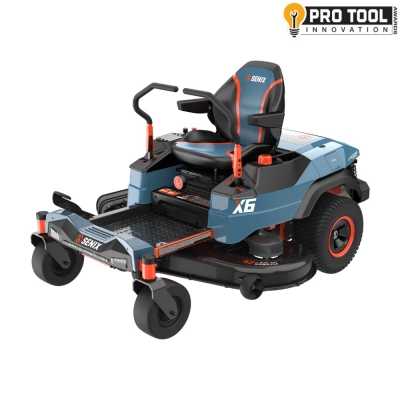
 (5.0)
(5.0)